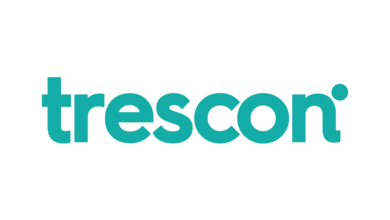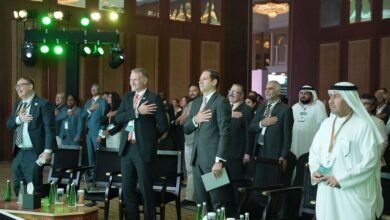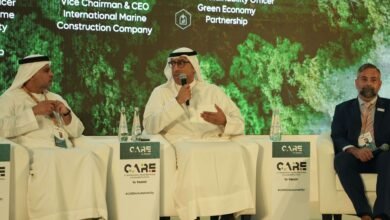
Exploring the Ambitious Saudi Giga Projects of the Future
In an era where ambitious urban development redefines skylines, the Saudi giga projects emerge as a cornerstone in the transformation of the Middle East’s geographical and economic landscape. Anchored by the Kingdom’s Vision 2030, these massive undertakings are not merely infrastructural feats but a bold reimagining of real estate, tourism, and sustainability in Saudi Arabia. Spanning from the futuristic city of NEOM to the historical depths of Makkah, these projects aim to pivot the nation’s reliance from oil to a diversified economy, fostering innovation in Riyadh, Jeddah, and beyond. They mark a significant shift towards luxury resorts, UNESCO World Heritage Sites, and cutting-edge urban development, poised to redefine the concept of giga infrastructure on a global scale.
This article delves into the ambitious roadmap set forth by the Public Investment Fund and the Saudi government to achieve an unprecedented urban metamorphosis by 2025. It will explore the key highlights among the Saudi giga projects, including NEOM’s aspiration to become a beacon of high-tech living, the cultural oasis of Qiddiya, the lush landscapes of King Salman Park, and the transformative real estate developments in Riyadh and Jeddah. Amidst navigating through the challenges and opportunities these colossal projects entail, the article will also shed light on their potential to bolster tourism, enhance the cultural fabric of the Kingdom, and serve as a model for future urban development ventures worldwide.
The Vision 2030 Plan
Under the leadership of King Salman bin Abdulaziz Al Saud and Crown Prince Mohammed bin Salman, Saudi Arabia launched Vision 2030 in 2016, a strategic framework to reduce the country’s dependence on oil, diversify its economy, and develop public service sectors such as health, education, infrastructure, recreation, and tourism. Vision 2030 articulates the long-term goals and expectations for a vibrant society, a thriving economy, and an ambitious nation, and is implemented through various Vision Realization Programs (VRPs).
Goals and Milestones
Vision 2030 is structured to unfold in phases, each building on the achievements of the last. The initial phase focused on foundational reforms in the public sector, economy, and societal structures, setting the groundwork for subsequent advancements. The current phase accelerates these efforts, emphasizing strategic investments and projects that have already begun to yield visible outcomes across the nation. The final stage will aim to sustain these transformations and capitalize on emerging opportunities for growth, ensuring long-term benefits for the country.
The plan’s ambitious goals include transforming Saudi Aramco into a global industrial leader, evolving the Public Investment Fund into the world’s largest sovereign wealth fund, and fostering a robust business environment that supports both local and international investors. Additionally, Vision 2030 aims to enhance the quality of life for residents by developing a vibrant society that embraces modern Islam while preserving cultural traditions, and by creating a dynamic economy that offers opportunities for all.
Role of Giga Projects
Integral to achieving these ambitious goals are the Saudi giga projects, which are pivotal in driving the economic diversification strategy. Projects like NEOM, Qiddiya, the Red Sea Project, and Diriyah are not only enhancing the country’s infrastructure but are also crucial in transforming Saudi Arabia into a global hub for tourism and investment. These projects support the national aim to attract 100 million visitors annually by 2030, contributing significantly to the Kingdom’s tourism sector.
The giga projects are designed to complement the economic and cultural objectives of Vision 2030, creating sustainable urban communities and promoting the Kingdom as a key player in global economic reform. Through these initiatives, Saudi Arabia is setting a precedent for innovation, sustainability, and economic diversification that aligns with global standards and expectations.
Major Projects Transforming Saudi Arabia
Neom
Neom, envisioned as a cross-border city in the Tabuk Province of northwestern Saudi Arabia, represents a groundbreaking initiative in urban development. Planned to be constructed from scratch, Neom is set to become a hub for new technology and innovation. The city’s diverse climate, offering both sun-soaked beaches and snow-capped mountains, enhances its livability while protecting the surrounding natural landscape. Neom’s development is a cornerstone of Saudi Vision 2030, aiming to diversify the Kingdom’s economy and establish a global benchmark in sustainable living.
The Red Sea Project
The Red Sea Project is an ambitious luxury tourism development along Saudi Arabia’s western Red Sea coast. This giga-project aims to transform over 28,000 square kilometers, including 50 islands, into a premier global tourism destination. With a focus on regenerative tourism, the project plans to preserve 75% of the destination’s islands and achieve a 30% net positive conservation benefit by 2040. The development includes the Red Sea International Airport and luxury resorts, enhancing Saudi Arabia’s appeal as a luxury tourism hub.
Diriyah
Diriyah, the birthplace of the first Saudi state, is undergoing a transformative $62.2 billion redevelopment. This project aims to revitalize the ancient city, integrating sustainable urban development with the preservation of its rich cultural heritage. As a UNESCO World Heritage Site, Diriyah is being developed into a global tourism destination, featuring cultural, educational, and recreational facilities, all designed to foster economic growth and enhance the cultural landscape of Saudi Arabia.
King Salman Park
King Salman Park, poised to be the world’s largest urban park, is a significant urban development project in Riyadh. Covering an area of 13.4 square kilometers, the park will feature a blend of recreational, cultural, and commercial facilities. This project not only supports the goals of Saudi Vision 2030 by promoting a vibrant society and sustainable environment but also aims to position Riyadh among the world’s top livable cities. The park’s development is a testament to Saudi Arabia’s commitment to enhancing urban life and providing public spaces that encourage social interaction and cultural expression.
Challenges and Opportunities
The ambitious scale of Saudi Arabia’s giga projects presents a dual landscape of significant challenges and promising opportunities. As the Kingdom strides towards the Vision 2030 objectives, the construction and development sectors face hurdles that must be navigated to leverage the full potential of these transformative initiatives.
Construction and Development Hurdles
The simultaneous development of multiple giga projects has led to a surge in demand for skilled labor, advanced technology, and robust infrastructure solutions. Organizations are pressed to enhance their capabilities in areas such as hiring skilled employees, developing accurate cost forecasts, and establishing effective governance and risk management processes. The extreme weather conditions in Saudi Arabia further complicate construction efforts, affecting labor productivity and the suitability of building materials. Additionally, the rapid pace of development has exposed a shortage of skilled labor, particularly in cities like Al Hofuf, Jubail, Riyadh, and Dammam. Technological adoption has been historically slow, although there is a growing recognition of its potential to revolutionize the construction industry.
Future Opportunities
Despite these challenges, the giga projects offer vast opportunities to reshape the Kingdom’s economic and social landscape. Advancements in technology, such as Building Information Modeling (BIM), prefabrication, and 3D printing, are set to play a crucial role in overcoming current hurdles. Increased collaboration between government, industry, and academia is essential to accelerate innovation and adoption of smart city technologies. Engaging the citizenry will also be pivotal in ensuring the initiatives meet their intended goals. The establishment of entities like the National Project Management, Operation, and Maintenance Organization (Mashroat) and the introduction of new government procurement laws are steps towards improving project delivery and fostering a more efficient construction sector.
These initiatives are part of a broader strategy to diversify the economy and enhance the quality of life for Saudi residents, aligning with the Kingdom’s Vision 2030 to transform into a global hub for investment and innovation.
Future Prospects
Expected Developments by 2025
By 2025, Saudi Arabia’s landscape is set to be significantly transformed by the ongoing giga projects. NEOM, the crown jewel of these initiatives, is expected to have around 200,000 construction workers on-site, pushing forward its development as one of the largest construction sites globally. Riyadh, in preparation for hosting major global events like the 2030 World Expo and the 2034 World Cup, is on track to double its population to between 15-20 million people. This expansion necessitates extensive infrastructure enhancements, including new hotels, stadiums, and improved public transport systems. Additionally, the Red Sea International Airport is nearing completion, further establishing Saudi Arabia as a regional aviation hub with Riyadh Air beginning operations in 2025.
The focus on renewable energy is also notable, with the country’s first green hydrogen energy plant in NEOM expected to be operational by late 2026. This aligns with Saudi Arabia’s target to meet 50% of its electricity demand through renewables by 2030, a significant increase from virtually no renewables in 2016.
Long-Term Economic Impact
The long-term economic impact of Saudi Arabia’s giga projects extends beyond traditional sectors. These projects are designed to diversify the economy from its traditional reliance on oil, with a trillion-dollar infrastructure pipeline supporting this transformation. As part of Vision 2030, these projects aim to turn the kingdom into a global hub for tourism, entertainment, and innovation, creating hundreds of thousands of new jobs in the process.
The introduction of new industries, such as electric vehicle manufacturing, is also notable. With significant investments by the Public Investment Fund in the EV value chain, facilities like the Lucid factory north of Jeddah and the upcoming Ceer Motors are pivotal. Additionally, plans for nuclear power plants and further renewable energy installations underscore the commitment to decarbonizing the domestic economy, with a national target set for net zero emissions by 2060.
These developments are expected to provide substantial social and environmental outcomes, influencing over a dozen sectors and potentially redefining business, tourism, and cultural landscapes in the Middle East.
As we’ve explored the scope and ambition behind Saudi Arabia’s giga projects, it’s clear that these initiatives are pivotal to the Kingdom’s strategic pivot away from oil dependency towards a diversified, innovation-led economy. Anchored in Vision 2030, projects like NEOM, the Red Sea Project, and the redevelopment of Diriyah exemplify a future where sustainability, technology, and cultural preservation coalesce to redefine urban development. These projects are not just architectural marvels but are the beating heart of Saudi Arabia’s vision for a new era of economic prosperity, environmental sustainability, and cultural richness.
Looking ahead, the ripple effects of these giga projects will be felt far beyond the Saudi borders, setting new benchmarks for global infrastructure projects. By 2025 and beyond, as these developments come to fruition, they promise to elevate Saudi Arabia on the world stage as a hub for tourism, innovation, and investment. Through the challenges and opportunities that lie ahead, the Kingdom’s commitment to reshaping its society and economy showcases a bold leap towards a future that harmonizes tradition with modernity, influencing the global narrative on sustainable urban development and economic diversification.







[…] Al Ain’s selection as the Eid Al Etihad ceremony venue holds deep historical meaning. This ancient oasis city is 8,000 years old and proves human determination can thrive in the desert. The city reached a significant milestone when it became the UAE’s first UNESCO World Heritage Site in 2011. […]